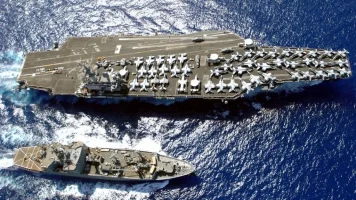- Views: 963
- Replies: 8
The Indian Navy is charting a course towards greater modernization by exploring the acquisition of a new class of autonomous submarine vessels. These 100-ton, unmanned vessels are designed to significantly enhance India's coastal defence and surveillance capabilities, particularly in shallow waters, addressing a key maritime security need.
Equipped with advanced combat capabilities, including weapons, mine clearance systems, and surveillance equipment, these highly maneuverable submarines are expected to play a crucial role in monitoring and countering the activities of adversarial forces.
Defence sources indicate that these unmanned vessels will be instrumental in safeguarding India's extensive 7,500-kilometer coastline against both conventional and asymmetric threats.
These autonomous submarines offer several advantages:
- Enhanced coastal defence: They are ideally suited for navigating complex littoral zones, such as the Arabian Sea and the Bay of Bengal, where agility and versatility are paramount.
- Force multiplier: Complementing the Indian Navy's existing fleet of larger, manned submarines, these autonomous vessels will act as force multipliers, enhancing situational awareness and combat readiness.
- Cost-effectiveness: Their smaller size and unmanned operation are likely to reduce manufacturing, operational, and maintenance costs compared to traditional submarines.


